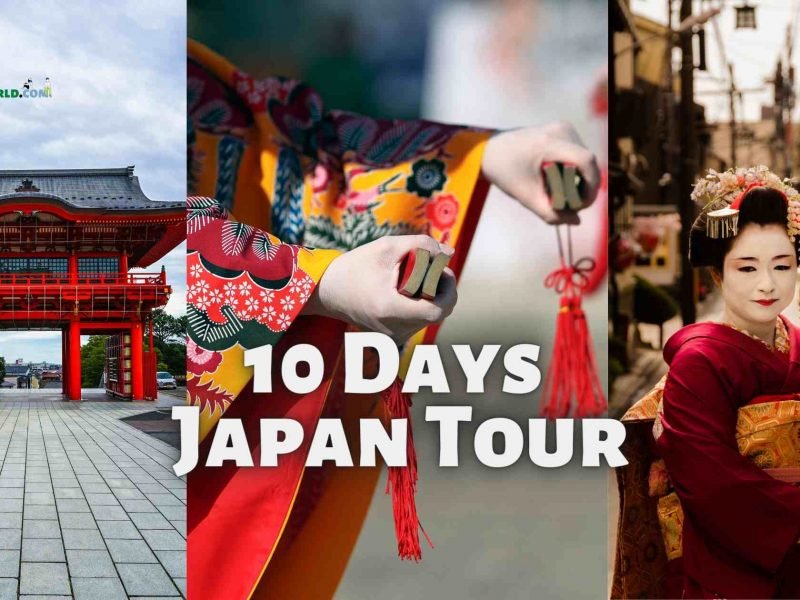About Tokugawa Art Museum
The Tokugawa Art Museum is a cultural institution that can be found in Nagoya, Japan. Its mission is to preserve and exhibit the art and culture of the Edo period in Japan (1603-1868), and it does so by focusing on the city’s history. The collection of the museum includes more than 10,000 individual works of art and objects of cultural significance. These items include ceramics, calligraphy, paintings, textiles, armor, swords, and equipment used in tea ceremonies.
The Owari Tokugawa clan established the museum in the early 20th century. It is located on the site of the Hommaru Palace, which was once constructed as a palace for the Tokugawa shoguns. The Owari Tokugawa clan established the museum. The Hommaru Palace was damaged during World War II, but the museum was reconstructed and relocated to a new structure in 1959. It reopened its doors with its original name.
Special exhibitions are held throughout the year at the Tokugawa Art Museum, in addition to the museum’s permanent collection. These exhibitions feature works from the Tokugawa Art Museum’s collection as well as works on loan from other institutions. The museum also hosts a variety of educational events and programs, such as workshops, demonstrations of traditional art forms and crafts, and talks given by experts in their fields.
It is widely acknowledged that the Tokugawa Art Museum is one of the most significant cultural institutions in Japan, and that the museum’s collection is highly respected due to the range and depth of the aesthetic and historical significance it contains. The museum is frequented by people from all over the world who are interested in increasing their knowledge of the art, culture, and history of Japan during the Edo period.
History timeline of Tokugawa Art Museum
The Tokugawa Art Museum is located in Nagoya, Japan, and houses a significant collection of cultural artifacts from the Edo period in Japan. The museum was founded by the Owari Tokugawa clan in the early 20th century. Here is a brief timeline of the history of the Tokugawa Art Museum:
- 1886: The Owari Tokugawa clan builds a residence in Nagoya, which becomes known as the Hommaru Palace.
- 1935: The Hommaru Palace is donated to the city of Nagoya, along with a collection of art and cultural artifacts amassed by the Tokugawa family over several centuries.
- 1937: The Tokugawa Art Museum opens to the public in the Hommaru Palace. The collection includes over 10,000 pieces, including ceramics, calligraphy, paintings, and swords, among other items.
- 1945: During World War II, the Hommaru Palace is destroyed in a bombing raid, and many of the museum’s artifacts are lost or damaged.
- 1959: The Tokugawa Art Museum reopens in a new building on the site of the Hommaru Palace. The new building is designed by architect Tokuma Katayama and features a modern interpretation of traditional Japanese architecture.
- 2004: The museum undergoes a major renovation, which includes the addition of a new wing and the installation of new exhibit spaces.
- 2017: The museum celebrates its 80th anniversary with a special exhibition featuring some of its most significant works, including a set of 16th-century folding screens depicting the battles of the Gempei War.
Today, the Tokugawa Art Museum remains one of the most important cultural institutions in Japan, showcasing the art and history of the Edo period and the legacy of the Tokugawa shogunate.
How to reach Tokugawa Art Museum
The Tokugawa Art Museum is located in Nagoya, Japan, and can be reached by various means of transportation. Here are a few options:
- By train: Take the JR Tokaido Shinkansen to Nagoya Station, then transfer to the Meijo Subway Line and get off at Shyakusho-mae Station. The museum is about a 10-minute walk from the station.
- By subway: Take the Meijo Subway Line and get off at Shyakusho-mae Station. The museum is about a 10-minute walk from the station.
- By bus: Take the Nagoya Sightseeing Route Bus Me-guru and get off at the Tokugawa-en stop. The museum is a short walk from the stop.
- By taxi: Taxis are widely available in Nagoya and can be a convenient way to reach the museum. Simply give the driver the address of the museum (1-1 Tokugawa-cho, Higashi-ku, Nagoya) and they will take you there.
It’s also worth noting that the Tokugawa Art Museum is located within Tokugawa-en, a large park that includes several other attractions, including the Tokugawa Garden, a traditional Japanese garden. Visitors can purchase a combined ticket that includes admission to both the museum and the garden, and can spend a leisurely day exploring the park and its many cultural offerings.
Do's and Dont's at Tokugawa Art Museum
Here are some general Do’s and Don’ts to keep in mind when visiting the Tokugawa Art Museum:
Do’s:
- Do take off your shoes before entering the museum. This is a customary practice in Japan, and shoe lockers are provided for visitors.
- Do be respectful of the exhibits and the museum staff. Avoid touching the displays, and follow any rules or instructions given by the museum staff.
- Do take advantage of the audio guides, if available. The audio guides can provide helpful context and insights into the museum’s collection.
- Do visit the Tokugawa Garden, which is located within the same park as the museum. The garden is a beautiful and peaceful oasis that offers a glimpse into traditional Japanese landscaping and design.
- Do consider purchasing a combined ticket for the museum and the garden, as it can be a good value and offer a full day’s worth of cultural experiences.
Don’ts:
- Don’t take photographs without permission. While photography is generally allowed in the museum, there may be specific areas or exhibits where photography is prohibited.
- Don’t bring food or drink into the museum. Eating and drinking is generally not allowed in exhibition spaces, and there are designated areas within the museum where visitors can enjoy refreshments.
- Don’t speak loudly or disturb other visitors. The museum is a place of reflection and contemplation, so it’s important to be considerate of other visitors and maintain a quiet atmosphere.
- Don’t run or play in the museum. The museum is a place for art and culture, not for play or roughhousing.
- Don’t smoke anywhere on the museum grounds. Smoking is not allowed in the museum or in the park surrounding it.
Highlights of Tokugawa Art Museum
Here are some highlights of the Tokugawa Art Museum that you might want to check out during your visit:
- Samurai Armor: The museum’s collection of samurai armor is particularly impressive, with many examples on display showcasing the intricate designs and craftsmanship of these protective suits.
- Japanese Ceramics: The museum’s collection of Japanese ceramics spans centuries and includes a wide variety of styles, from the ornate and colorful Imari ware to the simple and elegant Bizen ware.
- Calligraphy: The museum has a significant collection of calligraphy, including works by famous Japanese calligraphers such as Ouyang Xun, Wang Xizhi, and Emperor Saga.
- Lacquerware: The museum’s collection of lacquerware is extensive and includes examples from different regions and periods of Japan.
- Tokugawa Family Treasures: The museum is home to a number of treasures that belonged to the Tokugawa family, including tea ceremony utensils, musical instruments, and personal items such as writing boxes and fans.
- Tokugawa Art Museum Garden: The Tokugawa Art Museum is located within the Tokugawa Garden, a traditional Japanese garden that offers a peaceful and serene setting for visitors to enjoy. The garden includes a pond, waterfall, teahouse, and various walking paths.
- Special Exhibitions: The museum also hosts special exhibitions throughout the year, featuring works of art and artifacts from other collections or focused on specific themes or periods of Japanese history. These exhibitions offer a chance to see unique and rare pieces that are not normally on display in the museum’s permanent collection.






Comment (0)